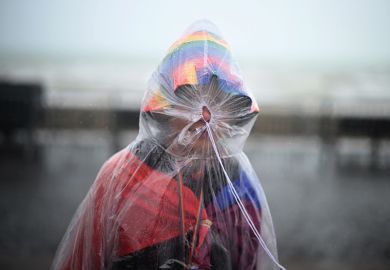In the 1990s, about a decade after post-traumatic stress disorder (PTSD) entered the diagnostic manuals, “trauma studies” took hold in the humanities and social sciences as a new conceptual lens through which to analyse cultural production. War, disaster, poverty, racism, sexual assault and child abuse, among other sources of traumatic experience, are hardly new phenomena. Nor is art that is made about, and in response to, adversity. Human suffering is as old as humanity itself. Nevertheless, the burgeoning academic discourse devoted to analysing trauma’s effects is distinctively modern, and growing in interest: trauma is trendy.
Kristine Stiles, art historian and curator of contemporary art, has been in the vanguard of trauma studies. This robust volume assembles the past decade and a half of her writing on contemporary artists whose work she reads either as an effect of or as a response to trauma. For the most part, Stiles’ writing is refreshingly free of theoretical jargon and needless obfuscation – an occupational hazard for academics writing about contemporary art. These lively, insightful essays provide a comprehensive overview of the many ways in which trauma studies can illuminate the field of art history. Her subjects include not only canonical figures such as Andy Warhol, Robert Rauschenberg and Chris Burden, but also lesser-known yet highly influential artists such as Franz West, William Pope.L and Wangechi Mutu. On the other hand, the danger with such a powerful organising concept is that one can begin to see it everywhere. Stiles at times takes her trope too far, finding trauma, implausibly, in 16,000-year-old cave paintings and in the political art of Yoko Ono.
Because trauma is a personal experience, albeit one embedded in historical, cultural and social forces, Stiles makes explicit connections between the personal histories of the artists she writes about and the meaning of their art. In some cases, as with Kim Jones, the Vietnam veteran who burned rats alive as part of a 1976 performance piece, or Larry Miller, whose drawings of his mother directly reflect the abuse and neglect he suffered in childhood, we can see clearly that the art is a direct response to trauma. It is not clear, however, whether in those instances the art is able to transcend its originating impulse and become more than a kind of therapy for its maker.
The more compelling case studies are those in which the art constitutes a response to trauma without being (merely) the personal confession of its maker. Stiles’ essay “Remembering Invisibility: Documentary Photography of the Nuclear Age” is a particularly strong example of how the concept of trauma can illuminate the art made in response to a particular historical moment without simply being a symptom of it. This is also the case with Mutu’s work, which is thematically concerned with the vulnerability of black female bodies but is not governed by a traumatic experience particular to the artist.
Taken as a whole, Concerning Consequences makes clear that it is neither necessary nor sufficient for an artist to be a survivor of trauma in order to make compelling artworks that respond to, or evoke, the larger concerns of our anxious age.
K. E. Gover is professor of philosophy, Bennington College.
Concerning Consequences: Studies in Art, Destruction, and Trauma
By Kristine Stiles
University of Chicago Press, 504pp, £79.21 and £33.40
ISBN 9780226774510, 6774534 and 6304403 (e-book)
Published 9 May 2016
POSTSCRIPT:
Print headline: You don’t have to suffer for the art
Register to continue
Why register?
- Registration is free and only takes a moment
- Once registered, you can read 3 articles a month
- Sign up for our newsletter
Subscribe
Or subscribe for unlimited access to:
- Unlimited access to news, views, insights & reviews
- Digital editions
- Digital access to THE’s university and college rankings analysis
Already registered or a current subscriber? Login




